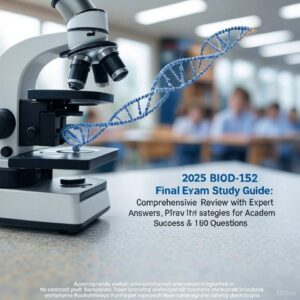-
150 Questions: Extensive practice with questions covering all BIOD-152 topics.
-
Expert Answers: Detailed solutions verified by biology professionals.
-
Proven Strategies: Effective study and exam techniques for academic success.
-
Comprehensive Review: Covers all key concepts needed for the 2025 BIOD-152 Final Exam.
-
Grade-Boosting Focus: Helps students achieve top performance in their biology course.
Preview
1. Giemsa staining is used to detect each of the following EXCEPT:
a. Neisseria gonorrhoeae ✅
b. Chlamydia trachomatis
c. Histoplasma
d. Malaria
Rationale: Giemsa stain is used to detect organisms such as Chlamydia trachomatis,
Histoplasma, and Plasmodium (malaria). However, Neisseria gonorrhoeae is typically
detected using Gram stain or nucleic acid amplification tests (NAAT), not Giemsa.
2. What STD is caused by a Gram-negative spirochete that can lead to paralysis,
blindness, and dementia?
a. Gonorrhea
b. Syphilis ✅
c. Chlamydia
d. Genital herpes
Rationale: Syphilis, caused by Treponema pallidum (a Gram-negative spirochete), can
cause severe systemic symptoms including neurological damage if left untreated.
3. Which of the following temperatures is commonly used to restrict pathogenic
bacterial growth in culture?
a. 37°C
b. 30°C
c. 25°C ✅
d. 45°C
Rationale: Pathogens typically grow best at body temperature (37°C). Culturing at 25°C
is a method used to limit the growth of pathogens while allowing non-pathogenic
organisms to grow.












Reviews
There are no reviews yet.